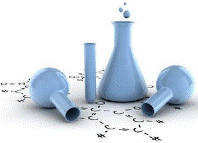Chemical and Biomolecular Engineering, Department of

Department of Chemical and Biomolecular Engineering: Faculty Publications
Date of this Version
11-23-2022
Document Type
Article
Citation
Cell Mol Gastroenterol Hepatol 2023;15:559–571; https://doi.org/ 10.1016/j.jcmgh.2022.11.008
Abstract
In vitro models of liver (patho)physiology, new technologies, and experimental approaches are progressing rapidly. Based on cell lines, induced pluripotent stem cells or primary cells derived from mouse or human liver as well as whole tissue (slices), such in vitro single- and multicellular models, including complex microfluidic organ-on-a-chip systems, provide tools to functionally understand mechanisms of liver health and disease. The International Society of Hepatic Sinusoidal Research (ISHSR) commissioned this working group to review the currently available in vitro liver models and describe the advantages and disadvantages of each in the context of evaluating their use for the study of liver functionality, disease modeling, therapeutic discovery, and clinical applicability
Included in
Biochemical and Biomolecular Engineering Commons, Biomedical Engineering and Bioengineering Commons


Comments
Open access.